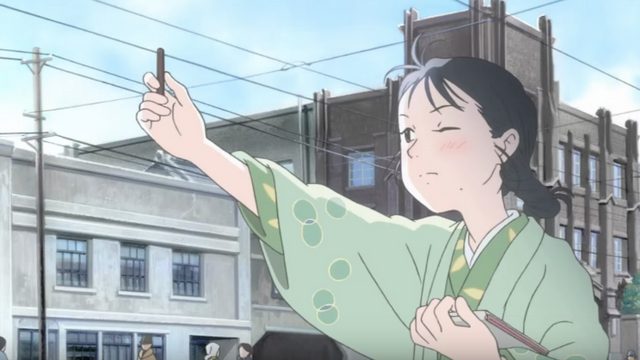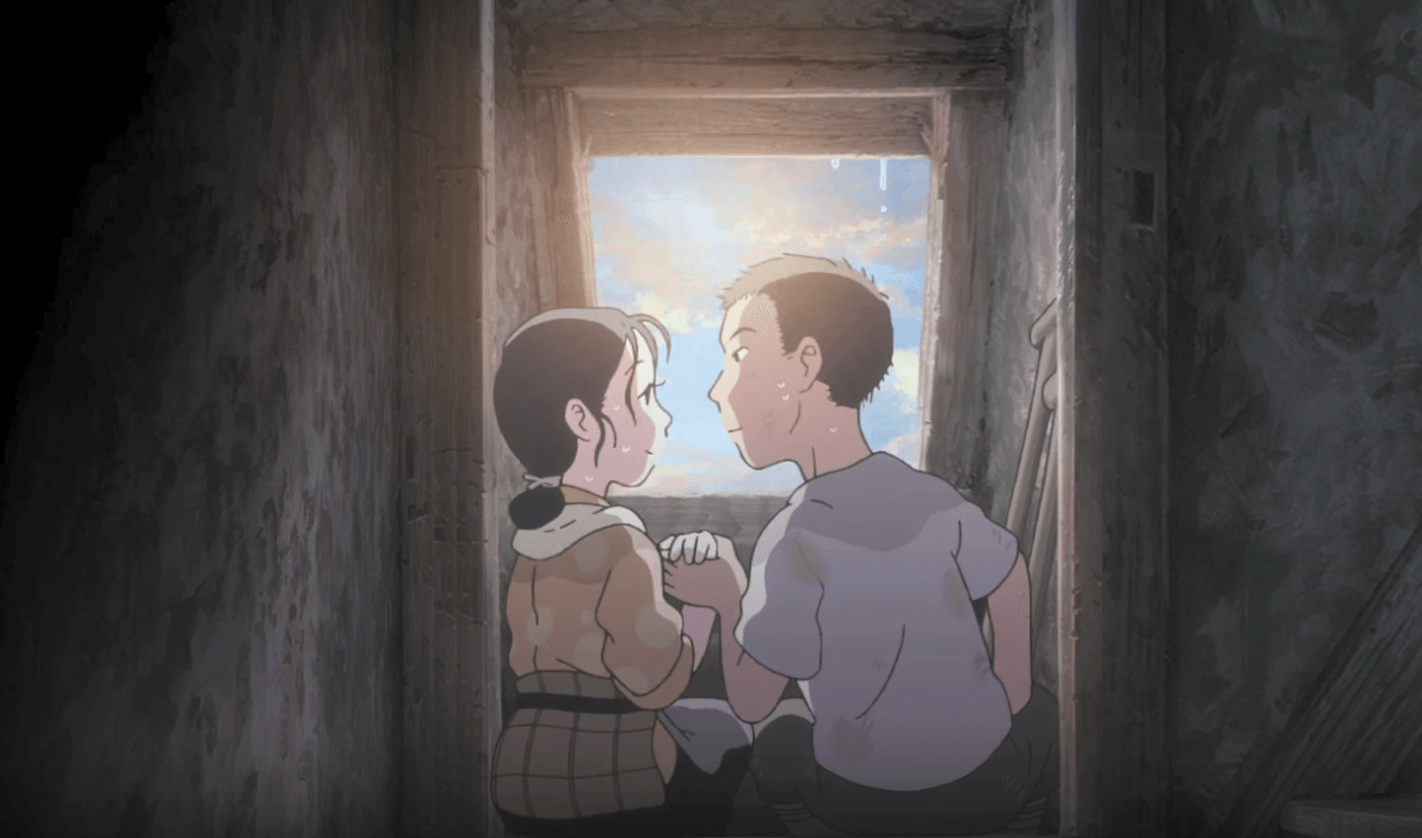SUMMARY
This is AI generated summarization, which may have errors. For context, always refer to the full article.

In a scene in Sunao Katabuchi’s In This Corner of the World, Suzu (Rena Nounen), the young girl who was plucked from her hometown of Hiroshima to be wedded to a lowly clerk of the naval offices in Kure, is caught outside during one of the many air raids inflicted by the Americans on Japan during the Pacific War. She witnesses the sky which previously housed clouds shaped like anvils become populated with exploding bombs.
Compassion in a time of hate

It’s a devastatingly powerful scene not only because of the obvious danger that Suzu is suddenly faced with but also because of how her perspective as a repressed artist forces her to see the wanton around her not as pure ugliness but as violent beauty.
Suzu transforms the scenery of destruction into one of painful recreation, with the blue sky being splattered not with fire and shrapnel but paint of various colors. Once the raid is over, Katabuchi shows the extent of the damage the raids caused the city. The entire port is leveled, revealing a wasteland full of rubble and debris from what used to be a bustling network of roads and buildings stretching out towards the sea.
Katabuchi fully understands the power of animation. With the complete freedom to interpret the harshness of reality, an artist can enunciate emotions by focusing not on the explicit display of the horrors of wartime life but on how such very real carnage is filtered by civilian eyes and mindsets.
In This Corner of the World dwells on compassion at a time when the most pervasive emotion is hate. In that sense, every time the film veers from its quaint observation of lives struggling to remain ordinary and normal despite the evils of war threatening to permeate, it is almost impossible not to get startled and perturbed by the immense disturbance.
Undeniable grace

What is most particularly intriguing about In This Corner of the World is how it is really a story about self-determination, notwithstanding the fact that its protagonist is one whose life is defined by the choices she wasn’t given a chance to make.
While the film does not necessarily criticize Suzu for her decision to remain a woman who is submissive to fate and other people deciding for her, it adamantly conjures scenarios of intense emotionality that manifests the character’s pining for independence.
She is given a chance to break away from a marriage she never wanted when her husband grants her a night with her former flame. In one moment where she stands up for her wants, she cuts her hair just to be given a chance to travel back to Hiroshima, only to be rejected. The film always provides those moments where freedom is just a passionate kiss, or a staunch demand, or determined escape away, but in a devious sense, the film seems to make a point that its heroine’s decision to remain the dutiful wife is also an expression of self-determination.
While that stance may be problematic to a certain degree, the film at least expresses it with absolute resolve, consistency, humor, and undeniable grace.
Told in episodes

In This Corner of the World is told in episodes, with Katabuchi dutifully showing the dates when Suzu’s very ordinary life is unfolding slowly but surely.
It is almost as if the film was counting down towards the inevitable day when the atomic bomb will be dropped on Hiroshima, creating a very certain unease while the film is busy presenting the domestic lives of characters who are painfully oblivious to their future. The film is devastatingly delicate. It thrives in very devoted presentation of the very fragile lives that persisted during a time when humanity was subservient to war and fate. – Rappler.com

Francis Joseph Cruz litigates for a living and writes about cinema for fun. The first Filipino movie he saw in the theaters was Carlo J. Caparas’ ‘Tirad Pass.’ Since then, he’s been on a mission to find better memories with Philippine cinema.
Add a comment
How does this make you feel?
There are no comments yet. Add your comment to start the conversation.